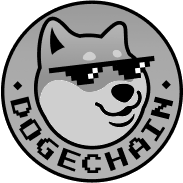|
|

|

|

|
RealDogePunks
Dogechain
|
AART Marketplace . Sell NFT . Wallet . BA Collections . 1 wDOGE Mint!
Style-based GANs – Generating and Tuning Realistic Artificial Faces and ARTGenerative Adversarial Networks (GAN) are a relatively new concept in Machine Learning, introduced for the first time in 2014. Their goal is to synthesize artificial samples, such as images, that are indistinguishable from authentic images. A common example of a GAN application is to generate artificial face images by learning from a dataset of celebrity faces. While GAN images became more realistic over time, one of their main challenges is controlling their output, i.e. changing specific features such pose, face shape and hair style in an image of a face. A new paper by NVIDIA, A Style-Based Generator Architecture for GANs (StyleGAN), presents a novel model which addresses this challenge. StyleGAN generates the artificial image gradually, starting from a very low resolution and continuing to a high resolution (1024×1024). By modifying the input of each level separately, it controls the visual features that are expressed in that level, from coarse features (pose, face shape) to fine details (hair color), without affecting other levels. This technique not only allows for a better understanding of the generated BackgroundThe basic components of every GAN are two neural networks – a generator that synthesizes new samples from scratch, and a discriminator that takes samples from both the training data and the generator’s output and predicts if they are “real” or “fake”. The generator input is a random vector (noise) and therefore its initial output is also noise. Over time, as it receives feedback from the discriminator, it learns to synthesize more “realistic” images. The discriminator also improves over time by comparing generated samples with real samples, making it harder for the generator to deceive it. Researchers had trouble generating high-quality large images (e.g. 1024×1024) until 2018, when NVIDIA first tackles the challenge with ProGAN. The key innovation of ProGAN is the progressive training – it starts by training the generator and the discriminator with a very low resolution image (e.g. 4×4) and adds a higher resolution layer every time. This technique first creates the foundation of the image by learning the base features which appear even in a low-resolution ProGAN generates high-quality images but, as in most models, its ability to control specific features of the generated image is very limited. In other words, the features are entangled and therefore attempting to tweak the input, even a bit, usually affects multiple features at the same time. A good analogy for that would be genes, in which changing a single gene might affect multiple traits.  How StyleGAN worksThe StyleGAN paper offers an upgraded version of ProGAN’s image generator, with a focus on the generator network. The authors observe that a potential benefit of the ProGAN progressive layers is their ability to control different visual features of the
The new generator includes several additions to the ProGAN’s generators: Mapping NetworkThe Mapping Network’s goal is to encode the input vector into an intermediate vector whose different elements control different visual features. This is a non-trivial process since the ability to control visual features with the input vector is limited, as it must follow the probability density of the training data. For example, if images of people with black hair are more common in the dataset, then more input values will be mapped to that feature. As a result, the model isn’t capable of mapping parts of the input (elements in the vector) to features, a phenomenon called features entanglement. However, by using another neural network the model can generate a vector that doesn’t have to follow the training data distribution and can reduce the correlation between features.
AART NFT Project Video
|


